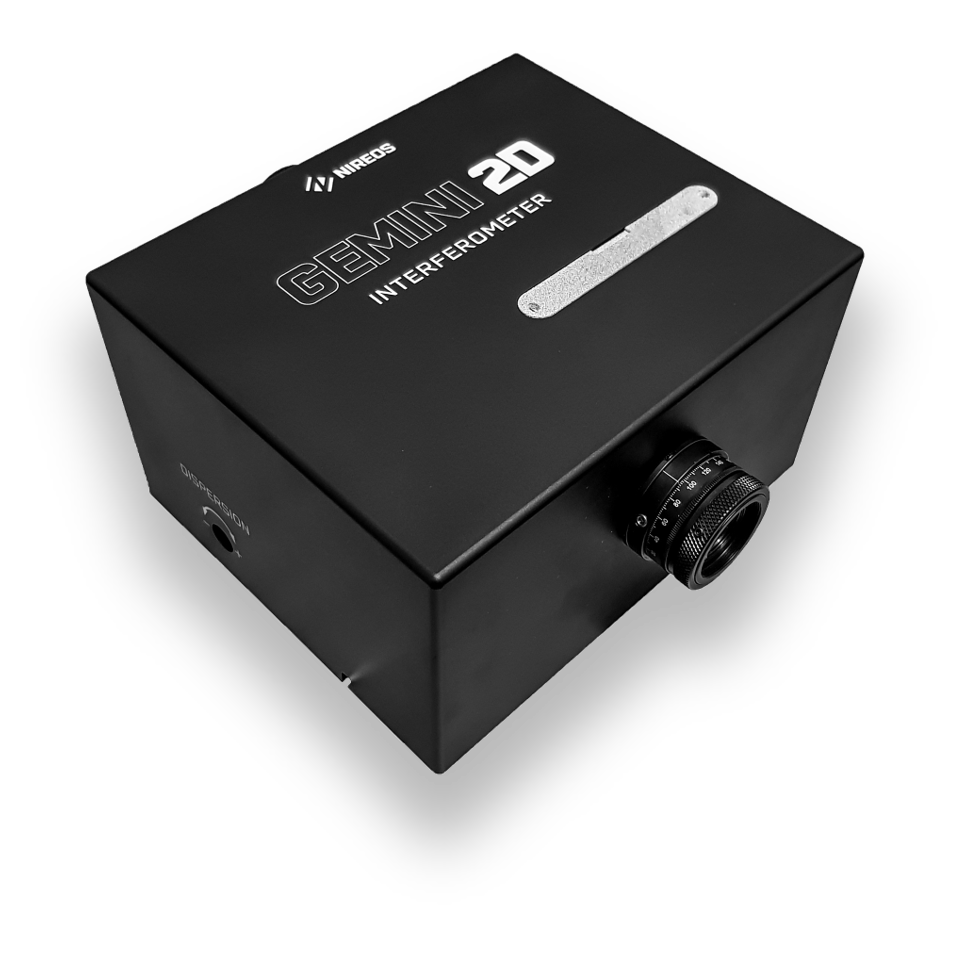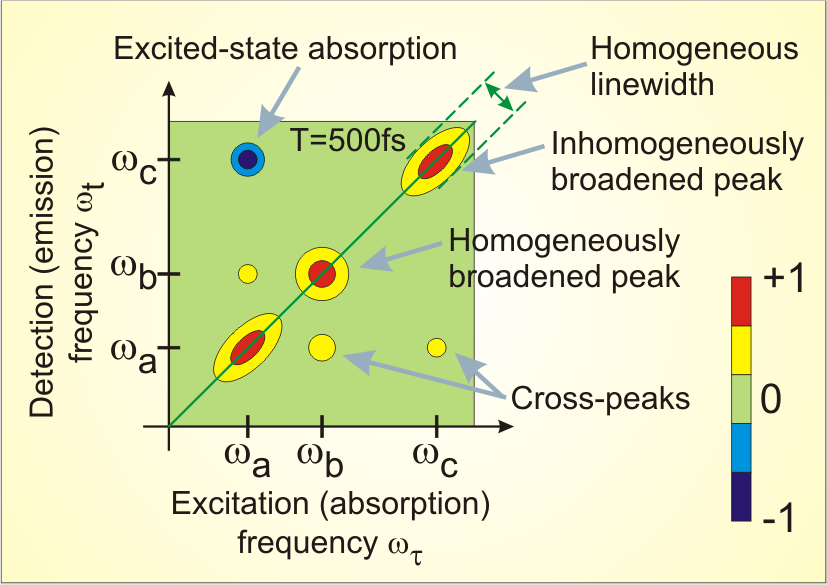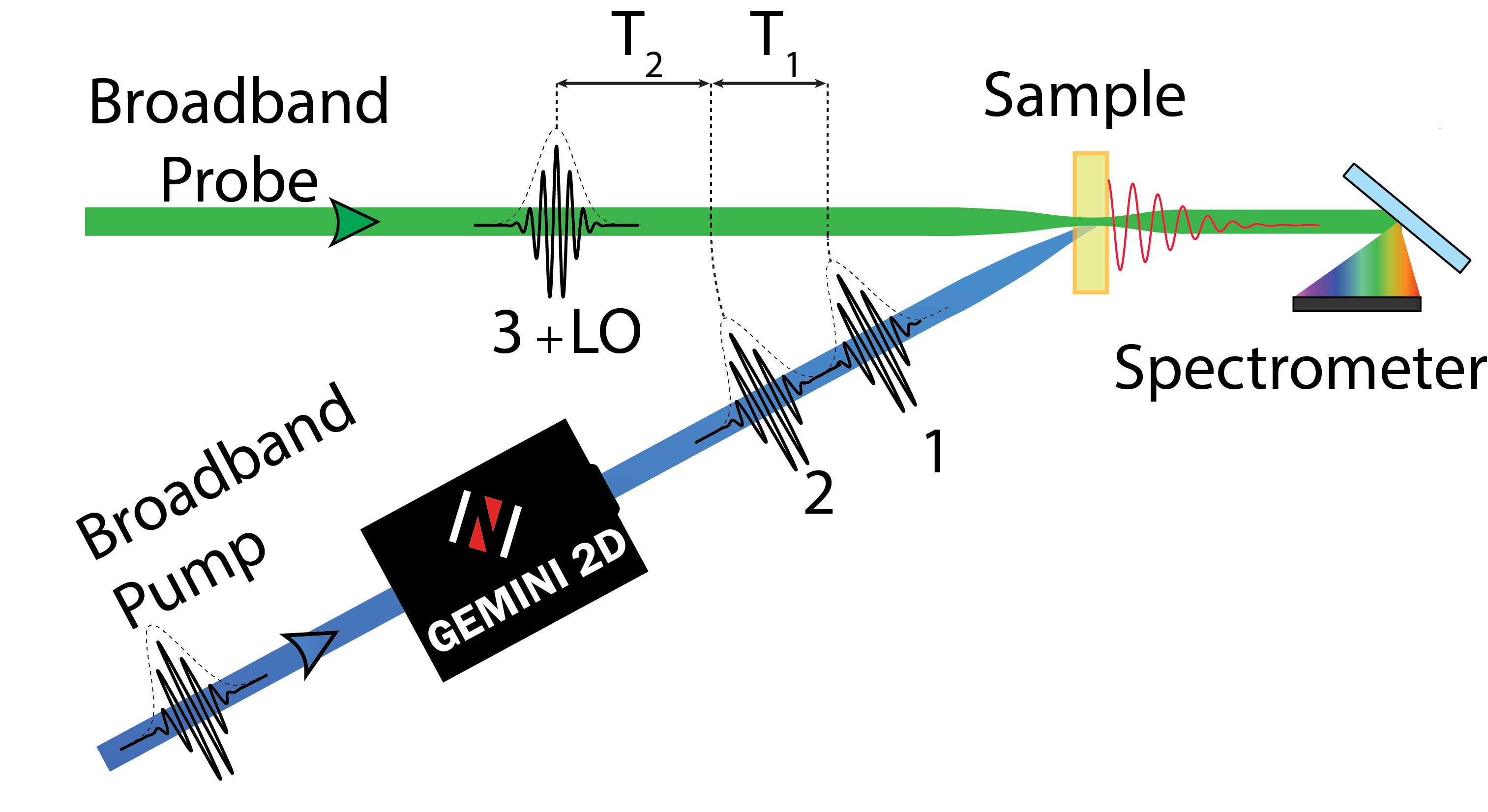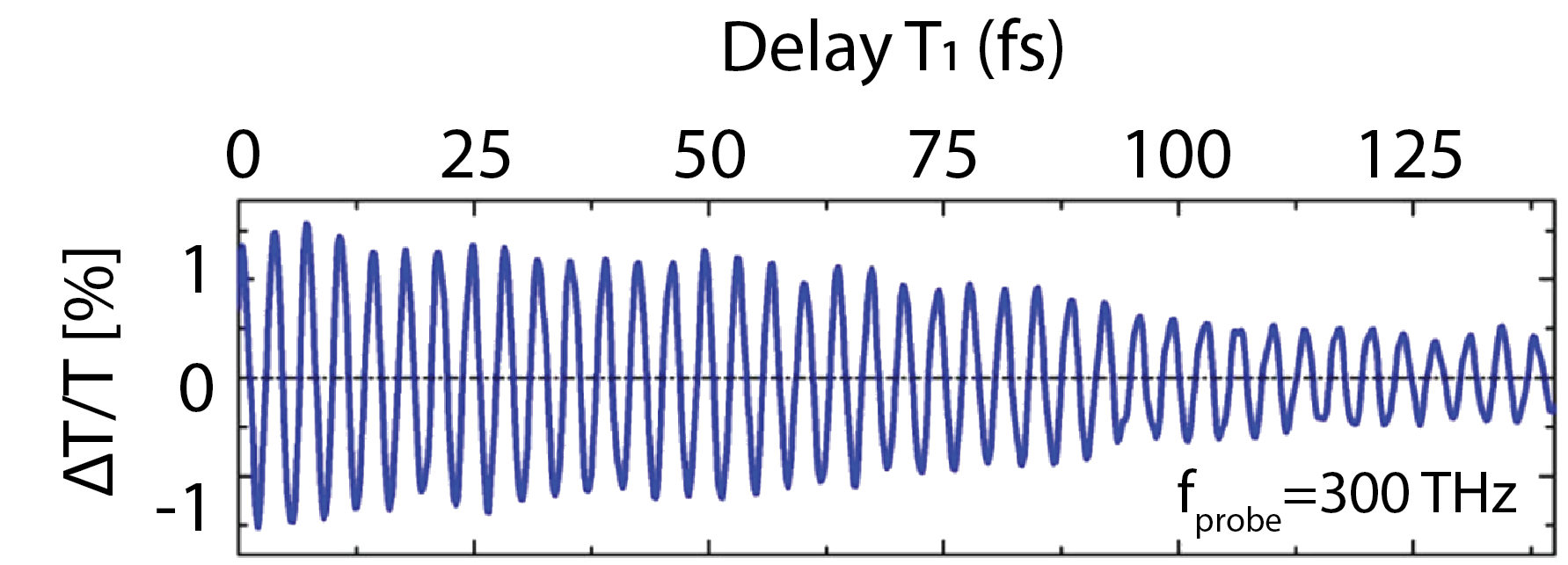
NIREOS’ GEMINI-2D turns your transient absorption spectrometer into a state-of-the-art two-dimensional electronic spectroscopy setup. GEMINI-2D is a compact and ultra-stable interferometer, generating two collinear and phase-locked replicas of your femtosecond laser pulses, with unrivaled stability and robustness.
– Pump-probe (collinear) geometry for absorptive line shapes.
High throughput: featuring a 1-cm clear aperture without any grating nor input/output aperture slits.
– Supports a variety of ultrafast amplifiers and optical parametric amplifiers (OPA or NOPA) as input, with any wavelength range from the UV to the near-infrared.
– Scan range and spectral resolution selectable by the user, who can start with quick measurements to have an initial look at its features, and then prolong the data acquisition to increase both the signal-to-noise ratio and the spectral resolution.
– Compact: only 18cm x 18cm footprint.
– Rugged, robust, factory assembled and aligned for easy integration in any existing pump-probe setup.
– Stable and insensitive to vibrations, thanks to our patented common-path geometry. It guarantees control and reproducibility of the pulse delay with better than 1-attosecond accuracy.
– Worldwide quick support.
| Version | S | L |
| SPECTRAL RANGE | 400 nm – 2300 nm (Standard)250nm – 3500nm (Ultra-broadband) | 400 nm – 2300 nm (Standard)250nm – 3500nm (Ultra-broadband) |
| MAX DELAY @ lambda=600nm for the SYMMETRIC version | from -400 fs to +400 fs | from -1050 fs to +1050 fs |
| MAX DELAY @ lambda=600nm for the ASYMMETRIC version | from -100 fs to +700 fs | from -100 fs to +2 ps |
| Delay Stability | Better than 1 attosecond | Better than 1 attosecond |
| Modes of operation | Step Scan (The user can select the dwell time for each delay via software) | Step Scan (The user can select the dwell time for each delay via software) |
| Dimensions | 180mm x 180mm footprint, 90mm height | 180mm x 180mm footprint, 90mm height |
| Weight | 2 kg | 2 kg |
Two-dimensional electronic spectroscopy (2DES) is an ultrafast laser spectroscopy technique that can probe the electronic, energetic, and spatial landscapes of a sample. 2DES is the optical analogue of Nuclear Magnetic Resonance, a spectroscopic technique that has revolutionized structural biology, enabling the determination of complex molecular structures with high spatial resolution. 2DES is the “ultimate” time-resolved nonlinear optical experiment, since it provides the maximum amount of information about the third-order nonlinear response of a system, and any other third-order nonlinear spectroscopy (such as pump-probe) is contained in the 2D spectrum. 2DES displays its full power in systems with multiple interacting components. 2DES provides two dimensional spectra that shows correlations between excitation and detection frequencies, with simultaneously high spectral and temporal resolution. 2DES can dissect congested spectra and reveal the molecular connections between transitions, thus providing a means to elucidate the overall functionality of a sample.

Model 2D spectrum for a three-component system. The elongation of the peaks along the diagonal displays the instantaneous distribution of frequencies in the transition, whereas the minor axes of the elliptically shaped diagonal peaks are measures of the homogeneous linewidths
This technique requires the interaction of the sample with a sequence of 3 laser pulses. Two of them must be phase-locked replicas, with variable delay, and can be easily generated with NIREOS’ GEMINI-2D interferometer by placing it in the pump beam before the sample, thus turning a pump-probe setup into a state-of-the-art 2DES spectrometer.

Pulse sequence in a 2DES experiment. In a 2-colour experiment pulses 1-2 (interferometrically stable) can have a different colour with respect to pulses 3/LO (also interferometrically stable). NIREOS’ GEMINI-2D is employed to generate pulses 1 and 2 and control their coherence time τ.
With respect to other nonlinear spectroscopic techniques, 2DES has the following advantages:
(i) It is possible to separate, and thus distinguish, contributions to the nonlinear signal that are spectrally overlapped in one-dimensional experiments. Analysis of cross-peaks reveals whether the different transitions seen in the sample absorption spectrum arise from the same or different molecular species and can quantify couplings and correlations between different excited states.
(ii) 2DES removes inhomogeneous broadening and thus measures the homogeneous linewidth of optical transitions, enabling the individual levels to be singled out in strongly congested spectra.
(iii) 2DES can follow the parallel pathways by which the coupled electronic dynamics evolve after photoexcitation in real time. This makes the 2D technique a particularly powerful tool for tracking excitation energy transfer processes from origin to terminus through multiple channels simultaneously.
(iv) 2DES overcomes the Fourier limit, obtaining simultaneously high temporal resolution (to follow dynamics occurring on the femtosecond timescale) and spectral resolution (to resolve excitation and emission energies over significant bandwidths with high spectral accuracy).
(v) It is possible to retrieve structural information on the relative spatial arrangement of the chromophores, by either probing the intermolecular electronic couplings through the analysis of the cross-peaks or manipulating the pulse polarizations. 2DES can connect the molecular structure (determined by X-ray crystallography) with the electronic energy levels and, in favorable cases, it can provide insight into the molecular structure when unknown.


Oscillating transient signal as a function of the relative delay T1 between the two pump pulses at a selected probe wavelengh and at a fixed population time T2.
A Forurier Transform ad a funcion of T1 for each probe wavelength allows one to retrieve the 2D maps ad a function of detection and exitation wavelengths.
Bidimensional maps of 2D Electronic Spectroscopy measurements obtained on a Light Harvesting (LH1) complexo f a sample of Rhodospirillum Rubrum for three diferente populations time T2 (15 fs, 45 fs, 4000 fs).